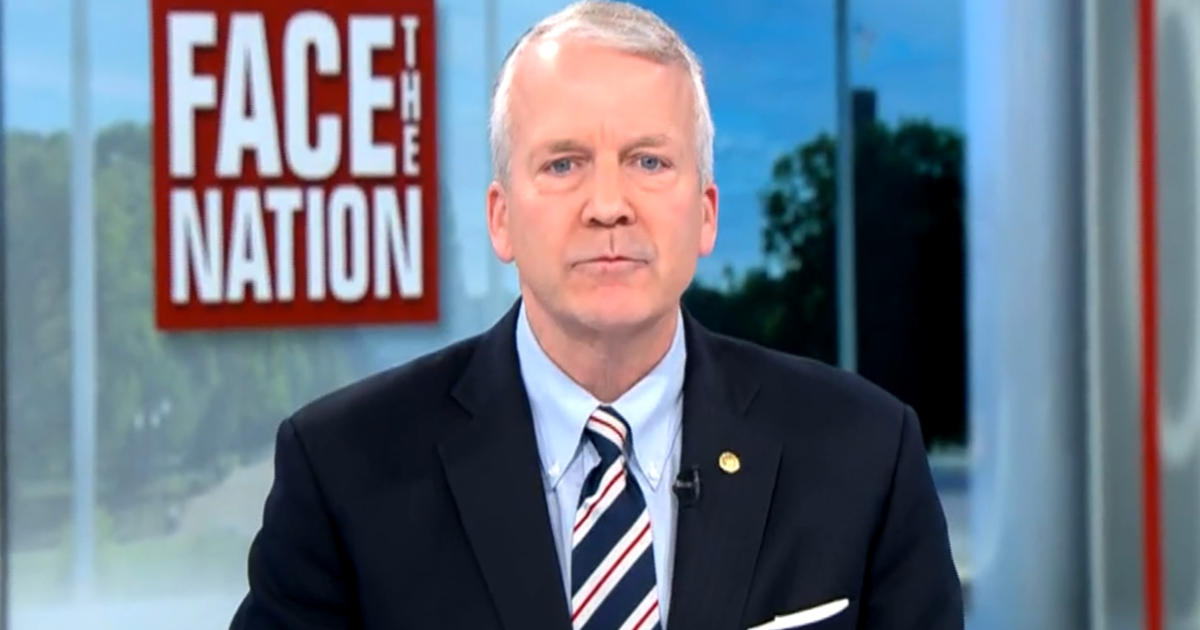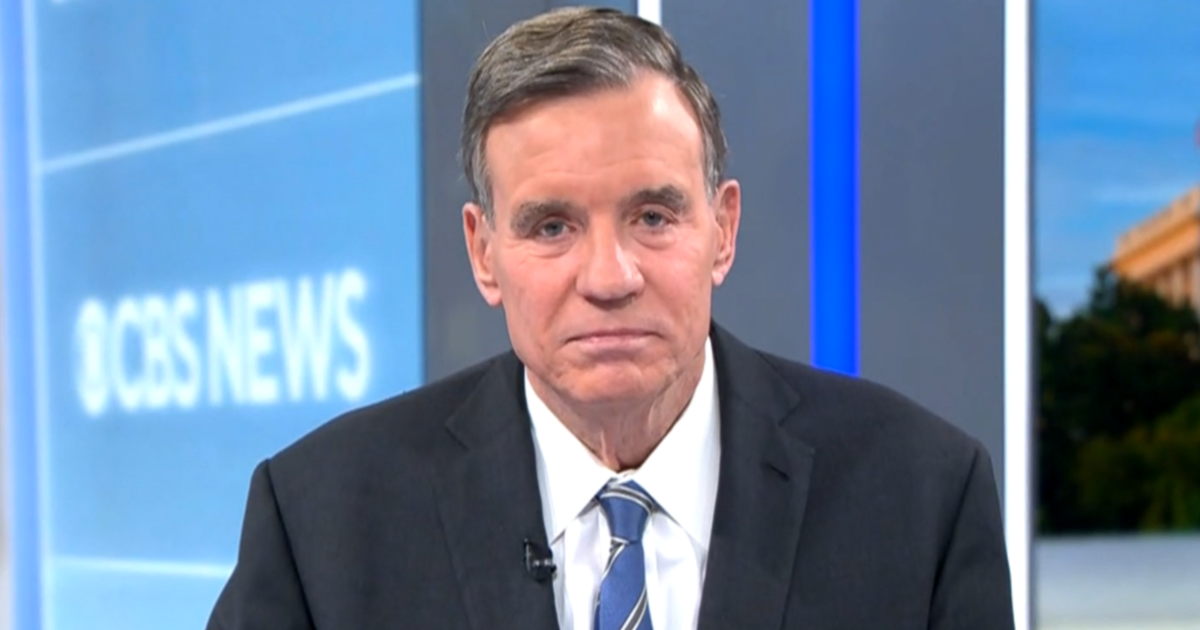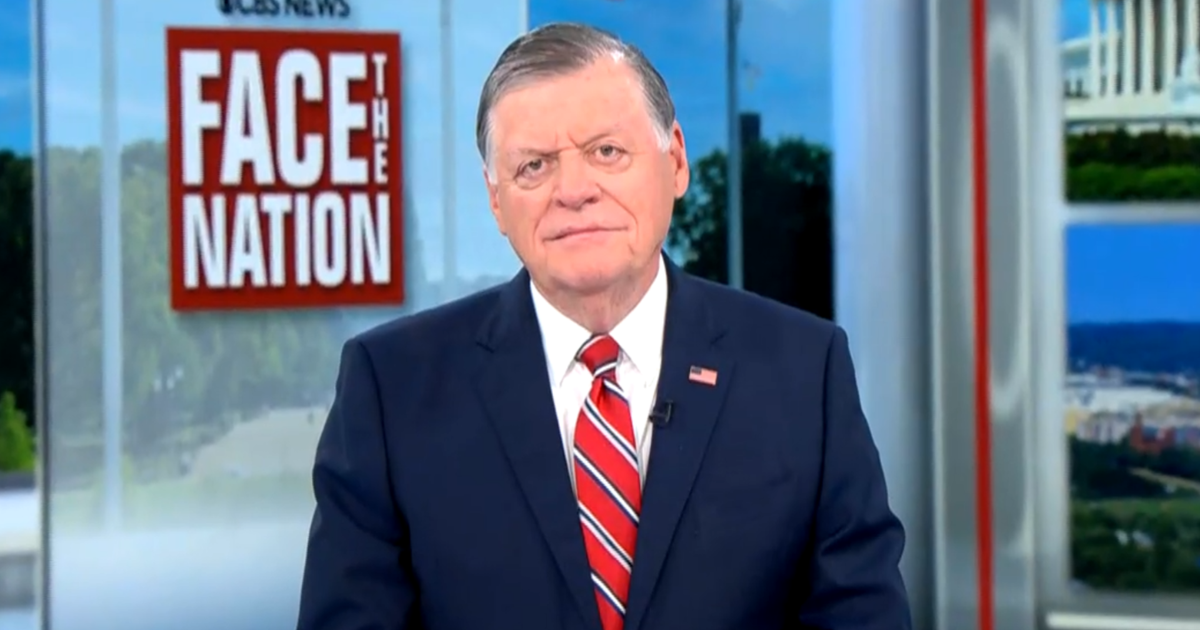Transcript: Scott Gottlieb discusses coronavirus on "Face the Nation," October 4, 2020
The following is a transcript of an interview with former FDA Commissioner Scott Gottlieb that aired October 4, 2020, on "Face the Nation."
MARGARET BRENNAN: We turn now to former FDA commissioner Dr. Scott Gottlieb, who joins us from Westport, Connecticut. Good morning to you.
DR. SCOTT GOTTLIEB: Good morning.
MARGARET BRENNAN: Last night, the president released a video of himself at Walter Reed, he spoke for about four minutes. He was able to get through it without being winded. He did sound a little bit hoarse. Given what's been disclosed publicly at this point, what do you think his status is?
DR. GOTTLIEB: It's hard to know. I- I wouldn't draw too many conclusions from that video. He did look good in the video. This is early on in the course of his illness. So he's not out of the woods. Typically, what we see is in the first week, you have sort of the viral response phase of the infection, and it's that second week when patients sometimes get into trouble. Now, there is some correlation with patients doing well that first week and being less likely to get into trouble that second week, when you have that inflammatory response- the post viral inflammatory response. But there are exceptions, and- and I have talked to physicians who have seen patients who did well the first week and still got into trouble. So I think we need to continue to be cautious here with the president and wish him the best.
MARGARET BRENNAN: The national security adviser, Robert O'Brien, indicated that- the days ahead could be tough. Day seven, that- that is the course of the virus itself. What do we know about exactly where the president is in the course of his treatment and the disease?
DR. GOTTLIEB: So, again, it's hard to know based on the information that they've disclosed, it sounds like he might have become symptomatic on Wednesday. And so the president probably became infected sometime on Friday or Saturday at one of- one of the events that he was at. And people are focusing on this Supreme Court event on Saturday. It could have been two introductions here. So the first generation of spread could have been either on Friday, or Saturday, or both. And then now we're seeing these- these are second generation cases, the president, Hope Hicks, the first lady. We're going to start to see third generation cases probably appear maybe Sunday, maybe today and maybe early this week, people who are- who were infected by the people who are currently diagnosed. So the president does appear to be, you know, about three to four days into sort of a symptomatic phase right now, if you believe he became symptomatic on Wednesday. So he still has time to go until I think he's out of the woods.
MARGARET BRENNAN: The CDC is not conducting the contact tracing. Washington, D.C. is not. The national security adviser said the White House was doing it, but that he was unable to pinpoint the source of the infection. How important is it to pin that down?
DR. GOTTLIEB: Look, I think they have an obli- this is the President of the United States. This was a gathering of high level officials. I think they have an obligation to understand how the infection was introduced into that environment. They might not be able to pinpoint it, but they should be very aggressive in a forensic analysis right now to try to find what the source of the infection was and see who brought it into that environment. And that's going to be important also to understand who else could be at risk. Are there any people who came out of that event who could be asymptomatic right now and should go get tested to make sure they're not continuing to spread to other officials? There doesn't seem to be a very concerted effort underway. I've talked to a number of officials who are at that event on Saturday, and a lot of focus is around that event as one of the potential places where the introduction was made, and they haven't been called yet by contact tracers. So that's concerning.
MARGARET BRENNAN: That is concerning because that suggests potential further spread. Speaker Pelosi mentioned she had concerns about the type of testing that had been used at the White House. You warned on this program back on May 10, that the Abbott Labs test that the White House was relying on was not sufficient to detect asymptomatic spread of COVID-19. Is it a matter of technology? Why did the procedures fail?
DR. GOTTLIEB Well, look, the Abbott test is a very good test when used appropriately. You have to fit the right test to the right purpose. The White House was relying almost solely on testing as a way to protect the president. They needed a zero-fail testing protocol because they weren't taking any precautions beyond testing people who are going to be in contact with the president. And that requires multiple layers of testing. If you want a- something close to a zero-fail testing protocol, and you're never going to be able to achieve 100%, you would probably be needing to use a PCR-based test at the point of entry at the White House. So the Cepheid GeneXpert probably would be more fit to purpose. But frankly, you'd need double layers of testing. You'd probably want to test people before they depart for the White House, and then test them again when they arrive. And even that wouldn't be 100%, but it would get you closer. Using these kinds of tests and- and they're now using the BinaxNOW as well- the antigen based tests and- and the Abbott ID NOW, using that to screen an asymptomatic population to try to detect virus, you might only have 50% sensitivity, perhaps a little bit better than that. But you're going to--
MARGARET BRENNAN: Who makes that call?
DR. GOTTLIEB: --let through some people who are infected.
MARGARET BRENNAN: Who makes that call?
DR. GOTTLIEB: Well, I think it- I think it was the White House physician. I know that concerns about the testing machines that were being used were raised to the White House at various points. I think the White House physician weighed in on that. I don't know who else weighed in on that, but I think they need to reassess those protocols. Frankly, you shouldn't just be relying on testing alone. You should be use- taking other steps on the compound. And the other thing to remember is the only people who are getting routinely tested were people who are going to be around the president. So staff was not getting routinely tested. So it's possible to get the virus onto the compound. And then from there, you could have an outbreak within the White House compound.
MARGARET BRENNAN: Some members of the president's inner circle, as you said, may still be at risk. The vice president, is he in the clear yet?
DR. GOTTLIEB: Anyone who is with the president on Tuesday, Wednesday is not in the clear. I mean, anyone who is with any of the people who are currently infected earlier this week, they were probably at their peak contagion at that point. So typically, you're most contagious about 24 hours before the onset of symptoms. So the debate prep on Tuesday is a source of potential third generation spread. The meeting of the GOP- the Senate GOP on Wednesday is a source of third generation spread. We'll likely see more cases emerge, unfortunately, early this week from the people who are currently infected who went on to infect other people. So this is still very much an evolving situation. Now, look, we hope not. And there are situations where there is no further propagation, but it's more than likely that you will see additional cases of third generation spread.
MARGARET BRENNAN: We will continue to update the public. Dr. Gottlieb, thanks as always, for your insight. We'll be right back.



